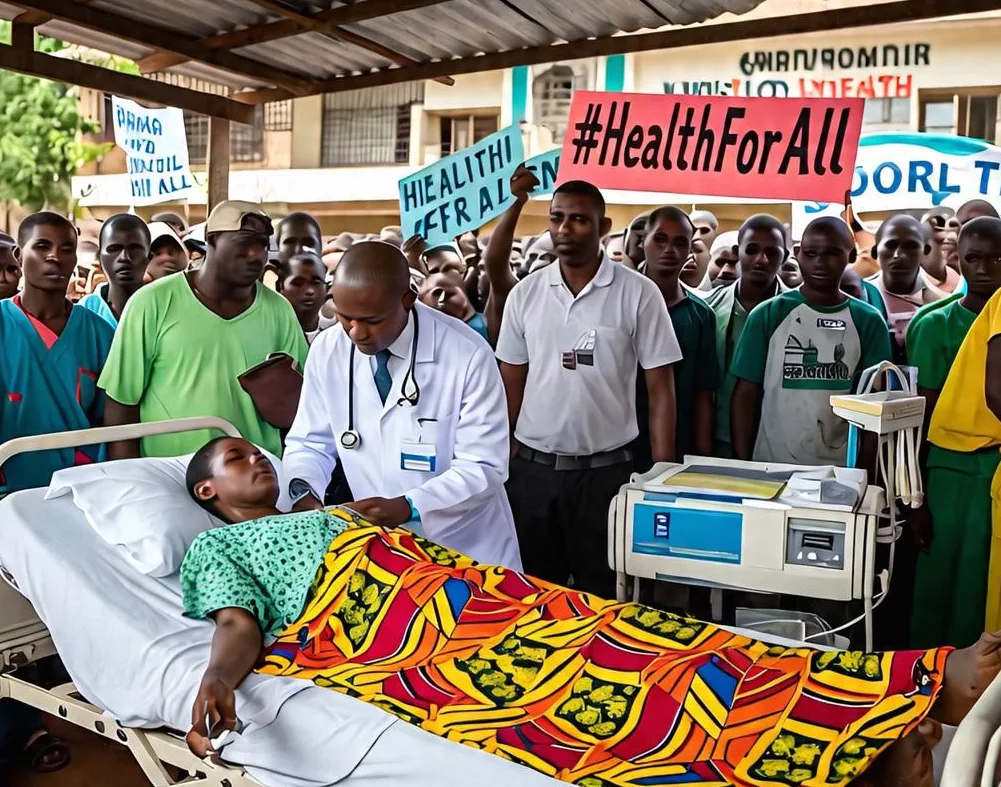By Byron Mutingwende
The World Health Organisation (WHO) has warned that there is an increasing trend of resistance to HIV drugs in its detailed report based on national surveys conducted in several countries and registered fears that the threat could undermine global progress in treating and preventing HIV infection if early and effective action is not taken.
The WHO HIV drug resistance report 2017 shows that in 6 of the 11 countries surveyed in Africa, Asia and Latin America, over 10% of people starting antiretroviral therapy had a strain of HIV that was resistant to some of the most widely used HIV medicines. Once the threshold of 10% has been reached, WHO recommends those countries urgently review their HIV treatment programmes.
“Antimicrobial drug resistance is a growing challenge to global health and sustainable development,” said Dr Tedros Adhanom Ghebreyesus, WHO Director-General. “We need to proactively address the rising levels of resistance to HIV drugs if we are to achieve the global target of ending AIDS by 2030.”
HIV drug resistance develops when people do not adhere to a prescribed treatment plan, often because they do not have consistent access to quality HIV treatment and care. Individuals with HIV drug resistance will start to fail therapy and may also transmit drug-resistant viruses to others. The level of HIV in their blood will increase, unless they change to a different treatment regimen, which could be more expensive – and, in many countries, still harder to obtain.
Of the 36.7 million people living with HIV worldwide, 19.5 million people were accessing antiretroviral therapy in 2016. The majority of these people are doing well, with treatment proving highly effective in suppressing the HIV virus. But a growing number are experiencing the consequences of drug resistance.
WHO is therefore issuing new guidelines to help countries address HIV drug resistance. These recommend that countries monitor the quality of their treatment programmes and take action as soon as treatment failure is detected.
“We need to ensure that people who start treatment can stay on effective treatment, to prevent the emergence of HIV drug resistance,” said Dr Gottfried Hirnschall, Director of WHO’s HIV Department and Global Hepatitis Programme. “When levels of HIV drug resistance become high we recommend that countries shift to an alternative first-line therapy for those who are starting treatment.”
Increasing HIV drug resistance trends could lead to more infections and deaths. Mathematical modelling shows an additional 135 000 deaths and 105 000 new infections could follow in the next five years if no action is taken, and HIV treatment costs could increase by an additional US$ 650 million during this time.
Tackling HIV drug resistance will require the active involvement of a broad range of partners. A new five-year Global Action Plan calls on all countries and partners to join efforts to prevent, monitor and respond to HIV drug resistance and to protect the ongoing progress towards the Sustainable Development Goal of ending the AIDS epidemic by 2030. In addition, WHO has developed new tools to help countries monitor HIV drug resistance, improve the quality of treatment programmes and transition to new HIV treatments, if needed.
The WHO HIV drug resistance report 2017 was co-authored by the Global Fund to Fight AIDS, Tuberculosis and Malaria, and the Centers for Disease Control and Prevention, USA.
“This new report shows a worrying picture of increasing levels of HIV drug resistance and, if unchecked, it will be a major risk to program impact,” said Dr Marijke Wijnroks, Interim Executive Director of the Global Fund. “We strongly recommend implementing WHO recommendations for early warning indicators and HIV drug resistance surveys in every national plan for antiretroviral therapy, and to consider funding them through Global Fund grants or reprogramming.”
Dr Shannon Hader, Director of CDC’s Division of Global HIV and Tuberculosis, US Centers for Disease Control and Prevention, added: “The new report pulls together key HIV drug resistance survey findings from across the globe that, taken together with other national-level data, confirm we must be forward-thinking in our efforts to combat resistance: scaling up viral load testing, improving the quality of treatment programs, and transitioning to new drugs like dolutegravir.“
Dr. Hader continued, stating that “Overall high rates of viral suppression across three recent national Population-based HIV Impact Assessments showed that present first-line regimens remain largely effective. However, special attention to populations at risk for higher resistance, such as paediatrics, adolescents, pregnant women and key populations, will be critical to target more urgent interventions. We call on the global community for continued vigilance and responsiveness.”
In addition to the Report Guidelines and the Global action plan on HIV drug resistance, WHO is releasing seven key guidelines and normative tools at the 9th International AIDS Society Conference on HIV Science IAS 2017, as follows:
- A new information note on point-of-care early infant diagnosis assays to support the timely detection of children with HIV.
- The results of “STAR-self-testing in Africa” an implementation research effort, together with a new landscape report on rapid diagnostic tests for HIV self-testing.
- A prioritised research agenda for children and adolescents to address low treatment scale-up and quality care for this group.
- New guidelines on advanced HIV disease and rapid initiation of ART recommending screening, treatment and prophylaxis for major opportunistic infections (such as tuberculosis and cryptococcal disease), and rapid initiation of ART and adherence support for people with advanced HIV.
- A new report outlining how countries can provide differentiated care tailored services for different needs of patient groups.
- A new technical update advising countries on what to consider when transitioning to a new treatment regimen, including dolutegravir.
- An announcement on the findings from INSPIRE, a WHO / Government of Canada collaboration on implementation research which investigates how to ensure mothers return for continuation of care.






